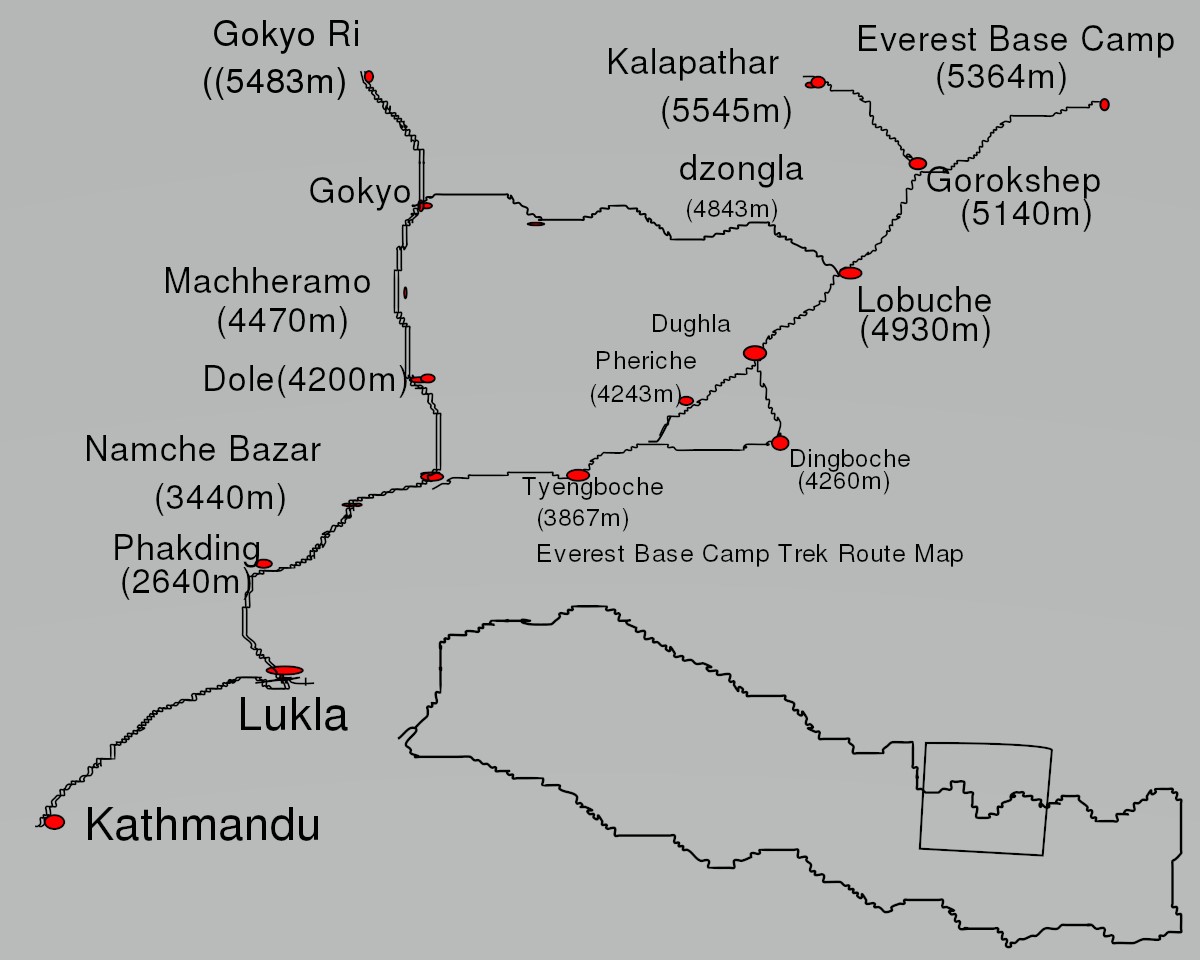Everest Base Camp Short Trek Overview
The Everest Base Camp Short Trek (EBC Trek) is a legendary adventure that takes you into the heart of the Himalayas, to the foot of the world’s tallest mountain, Mount Everest (known as Sagarmatha in Nepal). It’s one of the most popular treks in the world, and for good reason. Here’s a glimpse of what awaits you on this incredible journey:
Witnessing Everest in all its glory: The chance to stand at the foot of Mount Everest, the Earth’s highest peak, is a dream for many adventurers and nature enthusiasts. The awe-inspiring sight and the proximity to the peak are a huge motivator for many trekkers.
As you follow the Dudh Koshi River, you’ll encounter a variety of landscapes, from lush forests to barren high-altitude terrain, each offering its own unique charm. And of course, the highlight of the trek is reaching Everest Base Camp itself, where you can stand in awe of the world’s tallest peak and witness the bustling activity of climbers preparing for their ascent.
Beyond the physical challenges, the trek also offers a glimpse into the Sherpa way of life, with opportunities to visit monasteries, learn about their customs, and gain insight into their deep connection with the mountains.
Overall, the Everest Base Camp Trek is an unforgettable adventure that tests your endurance while rewarding you with unparalleled views and cultural experiences.
Thrill-seekers with limited time, rejoice! We now offer a concise 12-Day Everest Base Camp Trek, perfect for those seeking a taste of the majestic Himalayas and Sherpa culture nestled in the mountains.
For a more immersive experience, consider our extended 17-Day Everest Base Camp adventure. This option combines the trek with a captivating tour of Kathmandu Valley. Witness the breathtaking scenery of Everest and other Himalayan giants, while delving into the rich cultural and historical tapestry of Kathmandu.
Everest Base Camp Trekking Trails:
The journey to Mount Everest Base Camp typically commences in Lukla, a quaint town boasting one of the world’s most renowned yet challenging airports. From Lukla, adventurers embark on a path trodden by legendary climbers, traversing through enchanting Sherpa villages, verdant forests, and swaying suspension bridges spanning deep gorges. Along the trail, the Dudh Koshi River accompanies trekkers, offering breathtaking vistas of towering snow-capped peaks amidst the melodious symphony of rushing waters. As the altitude gradually ascends, travelers encounter Namche Bazaar, the vibrant heart of the Khumbu region, where they acclimatize and immerse themselves in the rich tapestry of Sherpa culture.
Destinations Covered: Kathmandu – Lukla – Phakding – Namche Bazar – Tengboche – Dingboche – Lobuche – Gorakshep – Everest Base Camp – Kalapathar.
What one can experience in Everest Base Camp Trek?
The Everest Base Camp Trek offers a multitude of once-in-a-lifetime experiences that will leave you breathless, both literally and figuratively. Here are some of the highlights:
Witnessing the grandeur of the Himalayas: The Himalayas are unlike anything else on Earth, and the EBC Trek takes you right to the heart of them. You’ll be surrounded by towering peaks, including Everest, Ama Dablam, Lhotse, and Nuptse. The views are simply awe-inspiring.
Experiencing Sherpa culture: The Khumbu region is home to the Sherpa people, who are renowned for their mountaineering skills and unique way of life. You’ll pass through their villages, learn about their traditions, and get a glimpse into their daily lives.
Hiking to Kala Patthar: Kala Patthar is a small peak at an elevation of 5,643 meters (18,514 ft) that offers stunning panoramic views of the Everest region. The hike to Kala Patthar is challenging, but the reward is truly worth it.
Flying into Lukla Airport: Lukla Airport, also known as Tenzing-Hillary Airport, is considered one of the most dangerous airports in the world. It’s a short, uphill runway located at an elevation of 2,860 meters (9,383 ft). The flight into Lukla is an experience in itself, offering stunning views of the Himalayas.
Visiting Tengboche Monastery: Tengboche Monastery is a beautiful Buddhist monastery perched on a hilltop overlooking the valley. It’s a popular stop on the EBC Trek and offers stunning views of the surrounding mountains.
Encountering unique wildlife: The Sagarmatha National Park is home to a variety of wildlife, including yak, Himalayan tahr, musk deer, and even the occasional snow leopard or red panda.
Overcoming a physical challenge: The EBC Trek is a challenging hike, but it’s also incredibly rewarding. The combination of altitude, varied terrain, and long days of trekking will push you to your limits, but the feeling of accomplishment upon reaching Everest Base Camp is truly unmatched.
Flora and Fauna on the way to Everest Base Camp Trek
The Everest Base Camp trek isn’t just a cultural immersion; it’s a spectacular exploration of the Himalayas’ diverse ecosystems. As you ascend, the landscape undergoes a dramatic transformation. Lush valleys brimming with rhododendron forests give way to vibrant alpine meadows, eventually culminating in the stark, awe-inspiring beauty of the high Himalayas.
Keep your eyes peeled for wildlife along the trail! You might spot sure-footed Himalayan tahr grazing on the slopes, elusive musk deer camouflaged amongst the rocks, or even the colorful plumage of various pheasant species. This incredible biodiversity is all part of Sagarmatha National Park, a UNESCO World Heritage Site. Trekking through this protected area adds another layer of fascination to your adventure.
This rewrite emphasizes the transformative nature of the landscape and highlights the thrill of potentially spotting wildlife. It also clarifies the significance of Sagarmatha National Park.
Everest Base Camp: A Gateway to Himalayan Grandeur
Nestled at an impressive 5,364 meters (17,598 ft) in the shadow of Mount Everest, the world’s highest peak, Everest Base Camp (EBC) is a destination that ignites the spirit of adventure. Reaching EBC is a remarkable feat, a dream realized for many, and a feeling akin to standing on the roof of the world. The base camp itself is a unique sight, marked by massive rocks adorned with colorful prayer flags.
Panoramic Vistas Await at Kala Patthar
But the true crown jewel of the experience lies just above EBC. While the summit of Everest itself is obscured from the base camp by other giants, the next day, you’ll embark on a hike to Kala Patthar (5,644 meters/18,519 ft). This renowned viewpoint rewards you with a breathtaking 360-degree panorama of snow-capped peaks, offering an unforgettable glimpse into the heart of the Himalayas.
This rewrite improves the flow, uses more descriptive language, and clarifies why Kala Patthar is a crucial part of the Everest Base Camp experience.
Culture and People Lifestyles in the Everest Region Trek
Immerse Yourself in the Rich Tapestry: Culture and People of the EBC Trek
The Everest Base Camp Trek (EBC Trek) isn’t just a physical challenge; it’s a portal to the vibrant culture and unique lifestyle of the Sherpa people. As you traverse the Khumbu region, prepare to be captivated by their traditions, deep connection to the mountains, and warm hospitality.
Sherpa Culture: Rooted in the Himalayas
The Sherpas are the heart and soul of the Everest region. Their way of life has been shaped for centuries by the rugged terrain and harsh environment of the Himalayas. Here’s a glimpse into what you’ll encounter:
Resilience and Resourcefulness: Living at high altitudes demands a deep respect for nature and a resourceful approach to life. Sherpas are known for their self-sufficiency, utilizing local materials for their homes and utilizing what the land provides for sustenance.
Deeply Spiritual: Buddhism is woven into the fabric of Sherpa culture. You’ll encounter prayer flags fluttering in the wind, colorful mani stones inscribed with mantras, and majestic monasteries perched on hillsides. Tengboche Monastery is a popular stop on the trek, offering a chance to witness Sherpa spiritual practices.
Tengboche Monastery on the way to Everest Base Camp Trek
Rich Artistic Heritage: Sherpa creativity is evident in their intricate woven textiles, hand-carved wooden items, and vibrant Thangka paintings depicting Buddhist deities. Consider purchasing a souvenir directly from local artisans – it’s a wonderful way to support their livelihood and take home a piece of Sherpa culture.
A Glimpse into the Sherpa Lifestyle
As you walk through Sherpa villages, observe their daily routines and gain an appreciation for their way of life:
Simple Living: Sherpa life revolves around practicality and self-sufficiency. Their homes are traditionally built from stone and wood, designed to withstand the harsh mountain climate. Farming and yak herding are essential aspects of their livelihood at lower altitudes.
Strong Community: Family and community are central pillars of Sherpa society. Villagers work together to support each other and maintain their traditions.
Experiencing Sherpa Culture:
Engage with the Locals: Greet the villagers with a friendly “Namaste” (hello). Try a few basic Nepali phrases to show your respect for their culture. While some Sherpas speak English, a little effort goes a long way.
Visit a Monastery: Immerse yourself in the spiritual atmosphere of a Sherpa monastery. Observe religious ceremonies if permitted and appreciate the intricate artwork and architecture.
Support Local Businesses: Purchase souvenirs directly from local artisans or enjoy a traditional meal prepared by a Sherpa family. This not only benefits the community but allows you to connect with the Sherpa way of life.
Respectful Interaction:
Remember, you are a guest in the Sherpa homeland. Dress modestly when visiting monasteries or villages. Be mindful of taking photos – always ask permission before photographing people. Leave no trace – properly dispose of waste and respect the fragile mountain environment.
The EBC Trek offers a unique opportunity to experience Sherpa culture firsthand. By embracing the local traditions and interacting respectfully with the people, you’ll gain a deeper appreciation for the beauty and resilience of the Khumbu region.
Trekking Trail Condition on the Everest Base Camp
The condition of the trails on the Everest Base Camp Trek (EBC Trek) generally varies depending on the season and the specific section of the trail. Here’s a breakdown of what you can expect:
Generally Well-Maintained:
The good news is that the EBC Trek is well-established and sees a high volume of trekkers throughout the seasons (except for the monsoon). This means the trails are well-maintained and relatively easy to follow. They are typically wide enough for single-file walking, pen spark with some sections wider to accommodate two-way traffic.
Lower Altitude Sections:
The trails at lower altitudes (Lukla to Namche Bazaar) are well-defined and mostly flat or with gradual inclines. The path is often made up of packed earth or loose stones.
Higher Altitude Sections:
As you ascend towards Everest Base Camp, the trails become steeper and rockier. There may be sections with loose gravel, scree, and uneven terrain. However, these sections are generally short and manageable with good hiking boots and poles.
Challenges to Consider:
Some sections of the trail, particularly those crossing bridges or traversing scree slopes, can be slippery, especially after rain or snowfall. Trekking poles can be a helpful aid for maintaining balance.
During the monsoon season (June-August), heavy rains can make the trails muddy and slippery, increasing the risk of landslides. It’s best to avoid trekking during this time if possible.
Since the EBC Trek reaches high altitudes, snow and ice can be encountered on the trails, especially at higher elevations and later in the season (around November). Microspikes or crampons may be necessary for safe passage in these areas. Consult with your trekking guide on the specific conditions and necessary gear.
Overall, the EBC Trek trails are well-maintained and suitable for trekkers with a moderate level of fitness and proper footwear. However, be prepared for some challenging sections, especially at higher altitudes, and adjust your expectations based on the season.
Why trek to Everest Base Camp?
The allure of the Everest Base Camp Trek (EBC Trek) draws in adventurers for a multitude of reasons. Here are some of the top motivators:
Spectacular Mountain Scenery: Witnessing the mighty Everest up close is a dream for many. But the EBC Trek offers more than just Everest. Trekkers are surrounded by a majestic tapestry of Himalayan peaks like Ama Dablam, Pumori, Nuptse, and Thamserku, all constantly changing as you progress along the trail.
Cultural Immersion: The trek takes you through the heart of the Khumbu region, home to the Sherpa people. You’ll pass through their villages, experience their way of life, and immerse yourself in their rich culture and traditions.
Adventure and Challenge: The EBC Trek is a physical feat. The combination of altitude, varied terrain, and long days of trekking pushes you outside your comfort zone, offering a tremendous sense of accomplishment upon reaching base camp.
UNESCO World Heritage Site: The trail traverses Sagarmatha National Park, a UNESCO World Heritage Site. This park boasts not only stunning mountain vistas but also diverse flora and fauna, including rhododendron forests, glaciers, and potentially rare glimpses of snow leopards and red pandas.
Unique Experiences: Along the way, you’ll encounter monasteries perched on hillsides, witness the daily routines of yak herders, and soak in the stunning views from vantage points like Kala Patthar, offering a panoramic vista of the Everest region.
Whether you’re a seasoned trekker or someone seeking an extraordinary adventure, the EBC Trek offers a unique blend of physical challenge, cultural immersion, and breathtaking natural beauty.
When to Visit Everest Base Camp Trek?
The best time to trek to Everest Base Camp depends on your priorities. Here’s a breakdown of the seasons to help you decide:
Spring (March-May)
This is the most popular time to trek for good reason. The weather is typically stable and dry, with clear skies offering stunning views of the mountains. Spring is also the time when the rhododendrons are in bloom, adding a splash of color to the landscape.
This is also the busiest time on the trail, so you can expect to encounter crowds. Additionally, flights to Lukla can be booked up well in advance, so it’s important to plan your trip early.
Autumn (September-November)
Another good option for trekking is autumn. The weather is usually clear and dry, with pleasant daytime temperatures. There are also fewer crowds compared to spring. Late October and November are particularly favored for their stable weather and great visibility.
It can get colder at night at higher altitudes, so you’ll need to pack accordingly. There’s also a chance of encountering snow at higher elevations.
Winter (December-February)
If you’re looking for a truly unique experience, consider trekking in winter. The trails are much less crowded, and you’ll have the mountains practically to yourself. The scenery is also quite different, with a blanket of snow covering the landscape.
Winter is the coldest time to trek, and the weather can be unpredictable. Heavy snowfall can make the trails treacherous, and temperatures can drop well below freezing. This is only recommended for experienced trekkers with proper winter gear.
Summer (June-August)
The monsoon season brings heavy rain and can make the trails muddy and slippery. Landslides are also more common during this time. The clouds and fog can obscure the views of the mountains.
There are very few crowds on the trails during the monsoon season. You can also find some good deals on trekking permits and accommodations. However, the downsides of trekking during this time usually outweigh the benefits.
Overall, the best times to trek to Everest Base Camp are spring (March-May) and autumn (September-November). If you’re looking for the best weather and don’t mind crowds, then spring is the ideal time. If you prefer fewer crowds and are okay with cooler temperatures, then autumn is a good option. Just be sure to weigh the pros and cons of each season before making your decision.
Everest Base Camp Trek Moderate or Difficulty?
There’s no easy way to get to Everest Base Camp, but the most common and popular route is by trekking. It’s a challenging trek that requires a good level of fitness, but it’s an incredibly rewarding experience.
The trek typically starts in Lukla, a small town nestled in the Himalayas. The only way to get to Lukla is by taking a plane from Kathmandu. The Lukla Airport, also known as Tenzing-Hillary Airport, is considered one of the most dangerous airports in the world due to its short runway and high altitude. The flight to Lukla is an experience in itself, offering stunning views of the Himalayas.
The trek from Lukla to Everest Base Camp takes about 12 days, although there are variations depending on your itinerary and pace. The trail is well-maintained and suitable for trekkers with a moderate level of fitness. However, the high altitude is the biggest challenge. Most trekkers spend a few days acclimatizing in Namche Bazaar, a large village located at an altitude of 3,440 meters (11,286 ft), before continuing their hike to Everest Base Camp.
Here’s a summary of the easiest way to get to Everest Base Camp:
Fly from Kathmandu to Lukla.
Trek from Lukla to Everest Base Camp, following a well-maintained trail with stunning scenery.
Spend some time acclimatizing in Namche Bazaar before continuing your hike.
While there’s no easy way to Everest Base Camp, the trek is an unforgettable experience that will challenge you and reward you with breathtaking views of the Himalayas.
Everest Base Camp Trek Permits and National Park Fees:
The Everest Base Camp Trek (EBC Trek) requires two permits and a national park fee to embark on this incredible Himalayan adventure. Here’s a breakdown of what you’ll need:
- Sagarmatha National Park Permit:
This permit grants you access to Sagarmatha National Park, the crown jewel of Nepal and home to Mount Everest.
Cost: The fee for foreign nationals is NPR 3,000 (around USD $28), while SAARC (South Asian Association for Regional Cooperation) nationals pay NPR 1,500 (around USD $15). Nepali citizens pay a minimal fee of NPR 100.
Where to Obtain: You can obtain the Sagarmatha National Park Permit from the Tourist Service Center in Kathmandu or Namche Bazaar.
- Khumbu Pasang Lhamu Rural Municipality Permit:
This permit allows you to trek within the Khumbu Pasang Lhamu Rural Municipality, the region encompassing Everest Base Camp.
Cost: The fee is NPR 2,000 (around USD $17) for the first four weeks, with a slight increase of NPR 2,500 (around USD $23) for stays exceeding four weeks. There’s no VAT applicable on this permit.
Where to Obtain: You can obtain the Khumbu Pasang Lhamu Rural Municipality Permit from the Tourism Board office in Kathmandu.
Additional Notes:
Validity: Both permits are valid for a single entry and the duration of your trek.
Passport Required: You’ll need to present your passport for verification when obtaining both permits.
Multiple Entry Permits: While not typically required for the EBC Trek, multiple entry permits for Sagarmatha National Park are available for those planning further exploration in the region.
Group Discounts: Some trekking companies may be able to negotiate a slight discount on permit fees for groups. But not guaranteed of discount.
National Park Fee:
There’s no separate national park fee for Sagarmatha National Park. The cost is already included in the Sagarmatha National Park Permit fee.
Total Cost:
For foreign nationals, expect to pay around USD $63 for permits (USD $28 Sagarmatha National Park Permit + USD $17 Khumbu Pasang Lhamu Rural Municipality Permit + minimal processing fees).
Important Tips:
Always obtain your permits through authorized channels to avoid any complications.
Keep your permits safe and readily available throughout your trek. Park officials may ask to see them at checkpoints.
Consider booking your permits in advance, especially during peak season (spring and autumn) when demand is high. Your trekking company can often assist with the permit application process.
By acquiring the necessary permits and national park fee, you’ll be ensuring responsible tourism practices and contributing to the conservation of the Everest region. Now you’re one step closer to embarking on your unforgettable EBC Trek adventure!
Beginners can do Everest Base Camp Trek
The Everest Base Camp Trek 12 Days does not require prior trekking experience, but it does necessitate thorough preparation. To ensure a safe and enjoyable trek, it’s essential to be physically and mentally prepared. The journey can be both exhilarating and demanding, so readiness on all fronts is key to a smooth experience.
Altitude Sickness: A Threat on the Everest Base Camp Trek
The Everest Base Camp Trek (EBC Trek) is an incredible adventure, but altitude sickness is a significant risk for trekkers. As you ascend, the air thins, and your body struggles to get the oxygen it needs. Here’s a breakdown of altitude sickness and its effects on the EBC Trek:
What is Altitude Sickness?
Altitude sickness, also known as Acute Mountain Sickness (AMS), is a common condition caused by the rapid ascent to high altitudes. While it can strike anyone, it’s more likely to affect those who ascend too quickly.
What are the Symptoms?
Altitude sickness can manifest in various ways, with some people experiencing mild symptoms and others suffering more severe effects.
Here are some common symptoms:
Headache – This is the most common symptom of altitude sickness.
Nausea and vomiting
Dizziness and lightheadedness
Fatigue and loss of energy
Difficulty sleeping
Loss of appetite
Shortness of breath, even at rest
How Does it Affect Your Trek?
Altitude sickness can significantly impact your enjoyment and potentially even endanger your trek. Symptoms can make it difficult to hike, eat, and sleep properly. In severe cases, altitude sickness can lead to High Altitude Pulmonary Edema (HAPE) or High Altitude Cerebral Edema (HACE), which are life-threatening conditions.
Preventing Altitude Sickness:
Gradual Ascent: The most crucial factor in preventing altitude sickness is to ascend gradually. The EBC Trek follows a well-established route with designated rest days for acclimatization, allowing your body to adjust to the decreasing oxygen levels.
Stay Hydrated: Drinking plenty of water is essential at high altitudes. Dehydration can worsen altitude sickness symptoms.
Listen to Your Body: Be aware of your body’s signals. If you start to experience altitude sickness symptoms, take a rest day or descend to a lower altitude. Pushing yourself through severe symptoms can be dangerous.
Medications:
Acetazolamide (Diamox): This medication can help to prevent and treat altitude sickness by promoting faster acclimatization. Consult your doctor before taking any medication.
Remember: Altitude sickness is a serious concern, but with proper planning, acclimatization, and awareness of your body’s signals, you can minimize your risk and enjoy a safe and unforgettable Everest Base Camp Trek.
Accommodation facilities in Everest Base Camp Trek
The type of facilities you’ll encounter on the Everest Base Camp Trek (EBC Trek) will depend on whether you stay in a hotel or teahouse. Here’s a breakdown of what to expect:
Teahouses:
Teahouses are the most common type of accommodation along the EBC Trek. They are basic guesthouses run by local families, offering a unique cultural experience.
Rooms are typically simple, with twin beds and basic furniture.
Shared bathrooms with squat toilets are the norm, although some lower-altitude teahouses may offer Western-style toilets. Bring your own toilet paper and toiletries as these are not usually provided.
Hot showers are available at some teahouses, but usually for an additional fee and at certain times of the day due to limited fuel supplies.
Dining is a communal affair, with meals served in a large dining room. The menu is typically limited to Nepali staples like dal bhat (lentil soup and rice), noodles, and potatoes.
Don’t expect luxuries like Wi-Fi or heating in most teahouses. However, the warmth of the hospitality and the stunning scenery more than make up for the basic amenities.
Hotels:
Hotels are a relatively new addition to the Everest Base Camp Trek. They are becoming increasingly popular for those seeking a more comfortable experience.
Hotels offer a wider range of facilities compared to teahouses, including private rooms with attached bathrooms, comfortable beds, and possibly even Wi-Fi in some locations.
Some higher-end hotels may also offer hot showers, heating, and even a bar or restaurant with a more extensive menu.
Here’s a table summarizing the general facilities you can expect at teahouses and hotels:
| Facility | Tea Houses | Hotels |
| Room Type | Shared rooms with twin beds | Private rooms with twin beds |
| Bathroom | Shared squat toilets, basic showers (fee) | Attached bathroom with Western toilet, hot shower (fee)
|
| Amenities | Basic | May include Wi-Fi, heating |
| Dining | Communal dining room with limited menu | Restaurant with more extensive menu |
Overall, the choice between a teahouse and a hotel comes down to your personal preferences and budget. Teahouses offer a more basic and cultural experience, while hotels provide more comfort and amenities. No matter which type of accommodation you choose, you’re sure to have an unforgettable experience on the EBC Trek.
Dining & Restaurant Facilities in Everest Base Camp
Dining Along the Everest Base Camp Trek: A Taste of the Himalayas
The Everest Base Camp Trek (EBC Trek) isn’t just about the breathtaking scenery; it’s also a culinary journey through the Khumbu region of Nepal. Here’s what you can expect when it comes to restaurants and meals on the trek:
Teahouses Rule the Roost:
Forget fancy restaurants – the EBC experience revolves around teahouses. These are family-run guesthouses that provide basic accommodation and, most importantly, hearty meals to keep you fueled for your trek.
The Magic of Dal Bhat:
Dal Bhat, the national dish of Nepal, will be your constant companion. This dish typically consists of steamed rice (bhat) served with lentil soup (dal) and various side dishes like curried vegetables, pickles, and occasionally, meat. It’s a delicious, filling, and affordable option.
Variations abound on the Dal Bhat theme. You might find spinach instead of lentils in the soup, or yak meat in the curry. Some teahouses offer vegetarian versions as well.
Beyond Dal Bhat:
While Dal Bhat reigns supreme, there are other options to satisfy your cravings. Teahouses typically offer menus with:
Momos: Steamed or fried dumplings filled with vegetables, meat, or cheese – a delightful Nepali staple.
Thukpa: A soul-warming noodle soup, perfect for chilly evenings.
Fried rice: A familiar option for those seeking comfort food.
Potato dishes: From french fries to curries, potatoes are a popular ingredient due to their availability at high altitudes.
Western fare: Some teahouses cater to trekkers’ requests with offerings like pasta, pizza, and sandwiches. However, these options might be less readily available and more expensive.
A Communal Experience:
Dining in teahouses is a social affair. Meals are usually served family-style in a large dining room, where you can interact with fellow trekkers and share stories of the day’s adventure.
Setting Expectations:
Keep in mind that teahouse meals are simple and prepared with readily available ingredients. Don’t expect gourmet cuisine. Fresh produce becomes scarce at higher altitudes, so the focus is on hearty and nourishing meals.
Tips for a Smooth Dining Experience:
Bring snacks: Pack some energy bars or dried fruit for those in-between moments.
Communicate allergies: If you have any food allergies, inform the teahouse staff beforehand.
Embrace the local experience: Try new dishes and enjoy the unique flavors of the Khumbu region.
Carry cash: Most teahouses won’t accept credit cards, so carry enough Nepali Rupees for your meals.
A Final Note:
While the dining options on the EBC Trek might be limited compared to a city break, the experience offers a chance to savor authentic Nepali cuisine and appreciate the warmth of Himalayan hospitality.
Trekking Guide/Leader in Everest Base Camp Trek
At Adventure Land Nepal, our team is more than just colleagues; we’re a close-knit family. We prioritize hiring locals to support their communities, and we invest heavily in rigorous training to ensure our staff are top-notch – all for you!
Our comprehensive training covers:
Full first-aid certification
Guide Training (specific to trekking)
Proficiency in English and other common languages (upon request)
Commitment to Village and Land Conservation
Specialized Mountaineering training (for unique expeditions or climbing treks)
We understand the importance of effective leadership for an enjoyable, safe, and successful trek. That’s why all our guides undergo meticulous training in leadership skills. Many of our guides hail from Sherpa country or other mountainous regions of Nepal, and their deep-rooted pride in their homeland shines through in how they lead treks and engage with you.
Porters in Everest Base Camp Trek
Trekking as a Team: Respect and Responsibility
At Adventure Land Nepal, we believe a successful trek is a team effort. Our porters are valued members, playing a vital role in your journey. We treat them with respect and ensure they are well-compensated for their hard work. By the end of your trek, you’ll undoubtedly appreciate their dedication and expertise.
Trek Lighter, Trek Smarter:
To ensure everyone’s safety and comfort on the trail, we kindly ask trekkers to limit their luggage weight to 22kgs (40lbs). This allows porters to carry manageable loads, making the trek smoother for all.
Your Wellbeing is Our Priority:
Adventure Land Nepal is fully committed to porter welfare. We provide them with proper clothing, gear, and comfortable accommodations. In the unlikely event of a serious accident or illness, porters receive the same level of care as any team member, including helicopter evacuation if necessary.
Supporting Positive Change:
We actively support the International Porter Protection Group (IPPG) in their mission to improve working conditions for porters throughout Nepal. Together, we can ensure fair treatment and a safe environment for everyone involved in the trekking industry.
Everest Base Camp Trekking Package Cost:
The cost of your Everest Base Camp adventure can vary depending on what matters most to you. Treks typically range from $1100 to $4800 [insert a trusted travel website here], with factors like duration and desired comforts influencing the price.
At Adventure Land Nepal, our standard 12-day itinerary offers an exceptional experience for $1,350. This price reflects inclusions like:
Accommodation: We ensure comfortable stays in teahouses along the trek route.
Transportation: Roundtrip flights from Kathmandu to Lukla (the gateway town) are included.
Permits: All necessary permits for Sagarmatha National Park and the trek itself are covered.
Guides: Our experienced and certified guides will lead you safely and informatively.
Remember to explore the inclusions carefully! While price is important, a clear understanding of what’s included will ensure you choose the trek that best suits your needs and budget.
Money Exchange in Kathmandu
While Kathmandu boasts a network of ATMs dispensing Nepali Rupees (NPR), the story changes once you hit the mountains. Here’s a breakdown to keep your finances flowing smoothly:
ATMs: The only Everest region ATM you’ll find is in Namche Bazaar. Be prepared to withdraw enough cash for the remainder of your trek, as ATMs in remote areas are scarce.
Card payments: Limited shops accept Visa and Mastercard, but expect a 3-4% service charge. It’s best to rely on cash for most purchases.
Currency exchange: Money changer booths in the Everest region will only exchange hard currency (USD, Euros, etc.) for Nepali Rupees. They don’t accept cards.
Planning Your Cash:
To avoid last-minute scrambles, consider exchanging some USD, Euros, or other commonly accepted currencies for NPR before your trek begins. This ensures you have enough cash for smaller villages and shops that don’t have card facilities.
This rewrite is more concise and uses action verbs to make it easier to follow. It also emphasizes the importance of planning your cash needs beforehand and suggests some commonly accepted currencies.

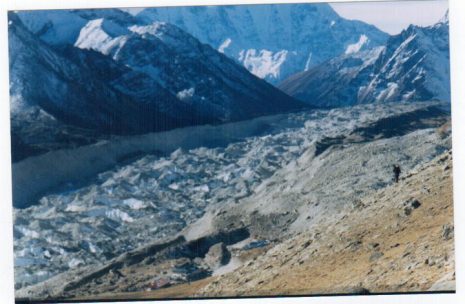
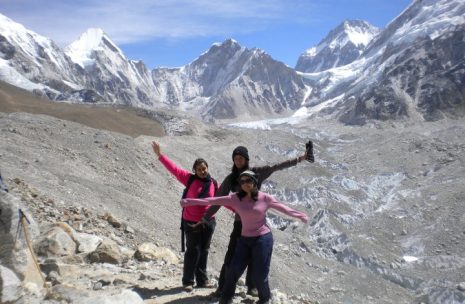
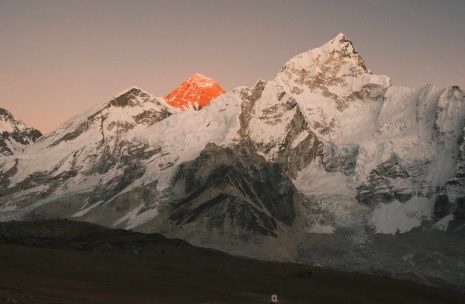
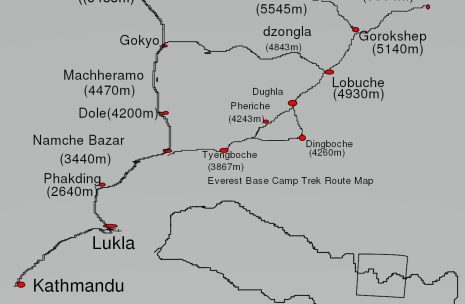
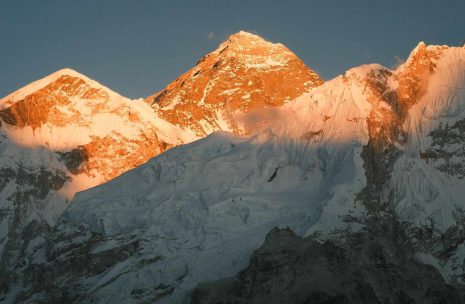
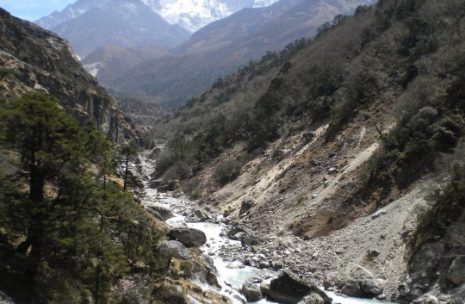


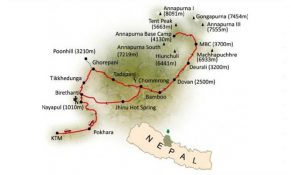
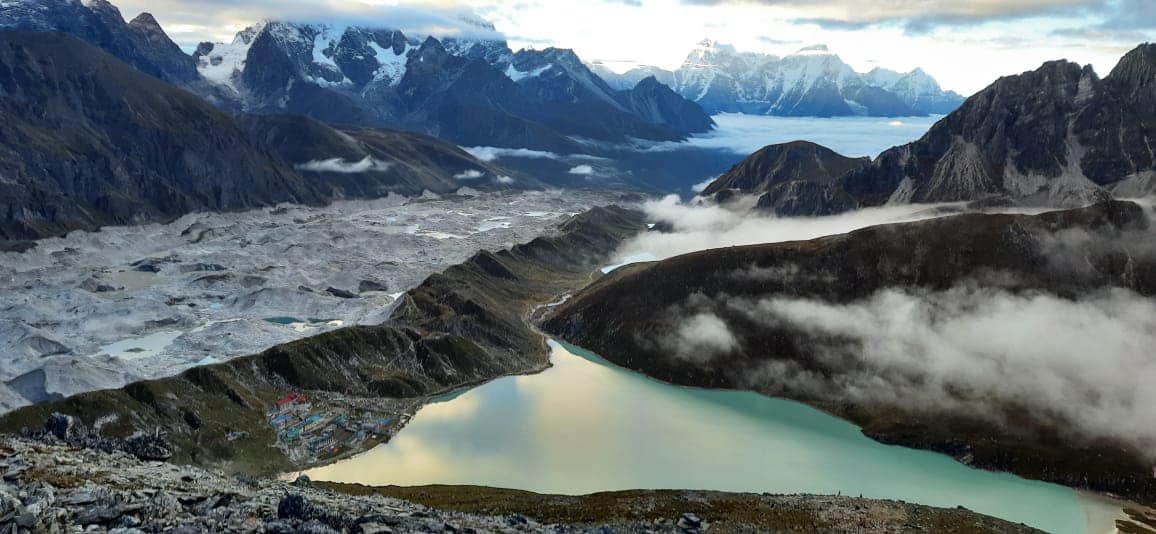 Gokyo Lake Trek 11 days
Gokyo Lake Trek 11 days
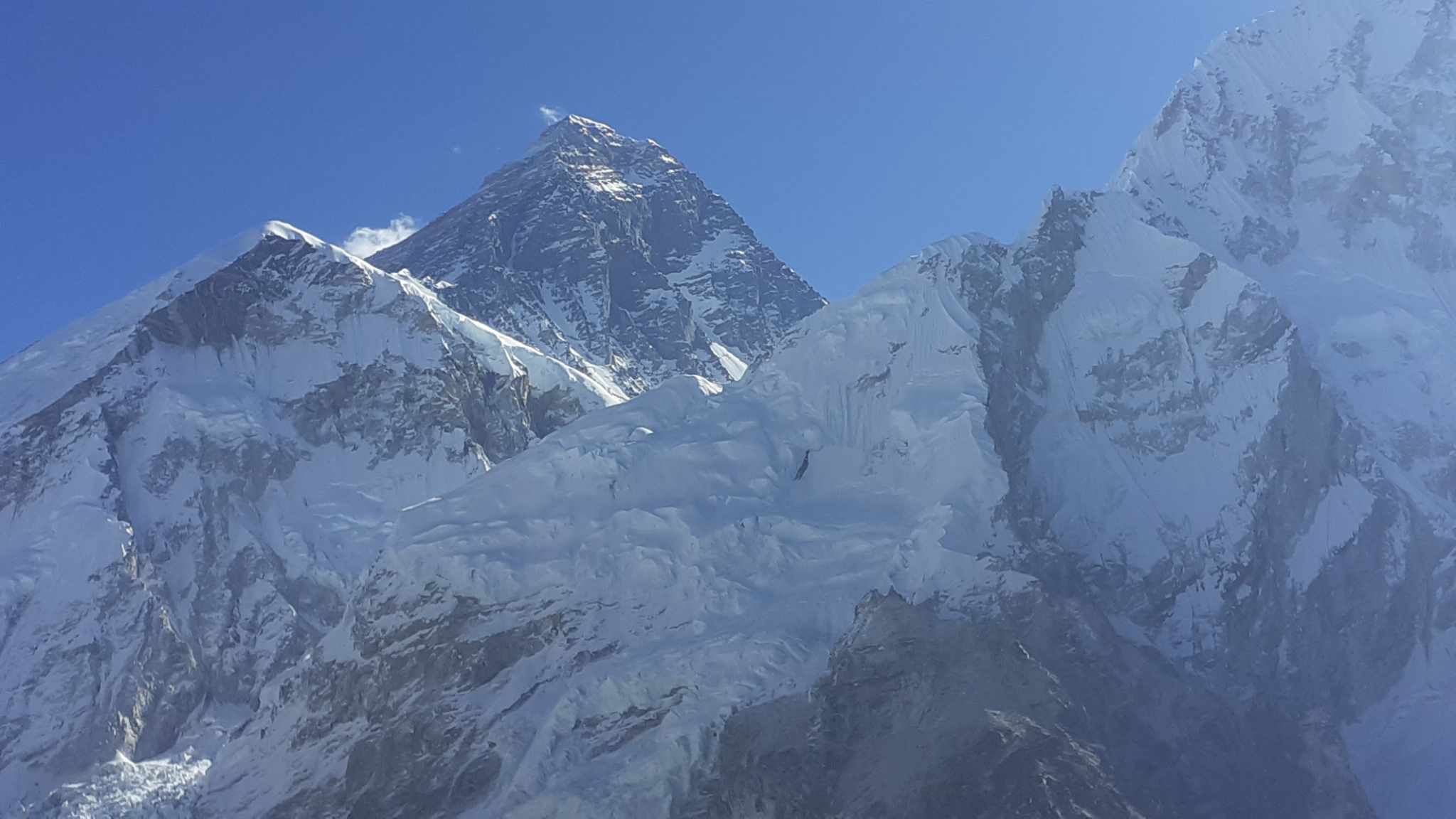 Everest View Trek Nepal 7 Days
Everest View Trek Nepal 7 Days
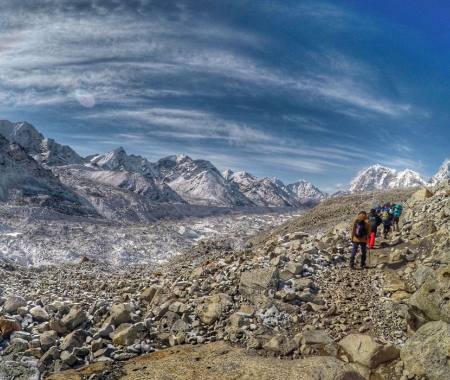 Luxury Trek to Everest Base Camp – 7 days
Luxury Trek to Everest Base Camp – 7 days
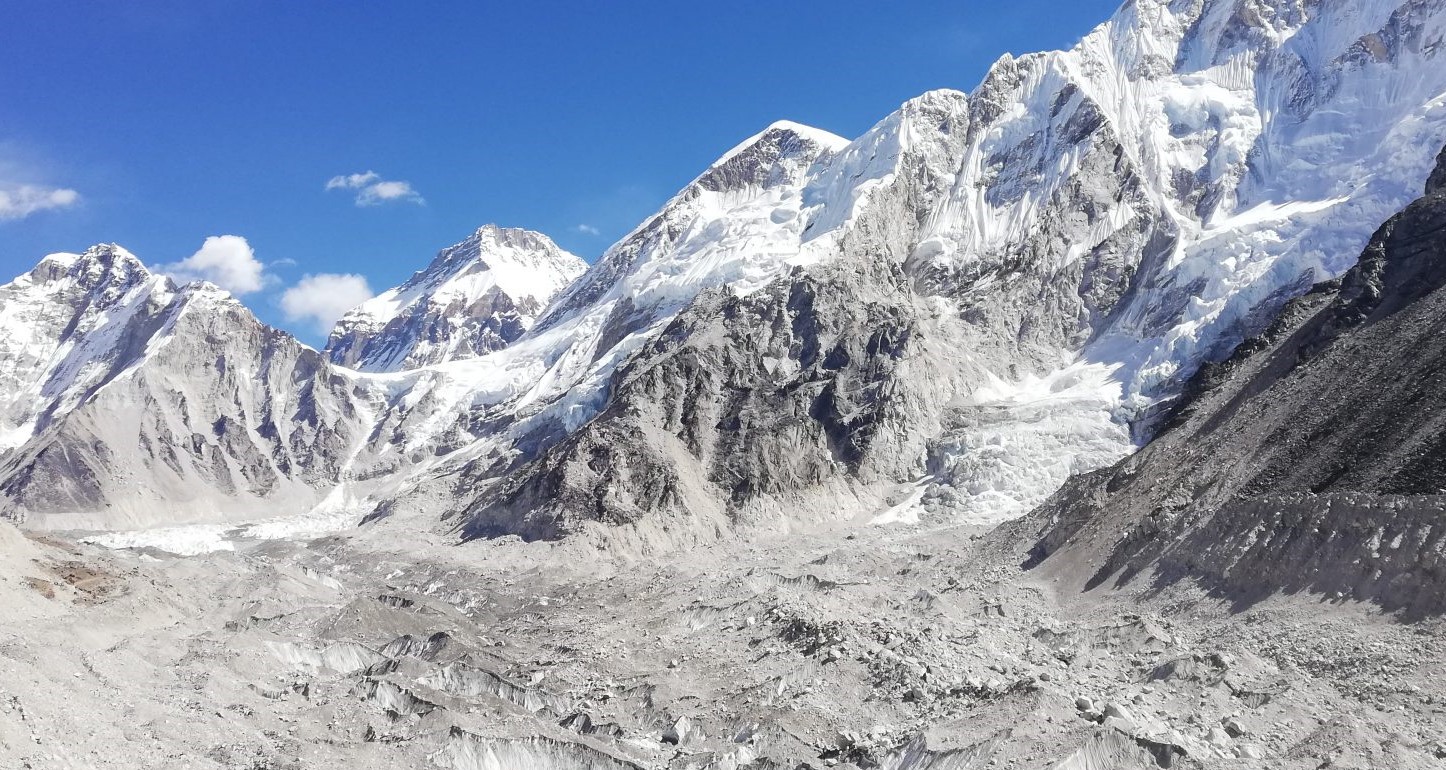 Luxurious EBC and Gokyo Lake Trek – 11 days
Luxurious EBC and Gokyo Lake Trek – 11 days
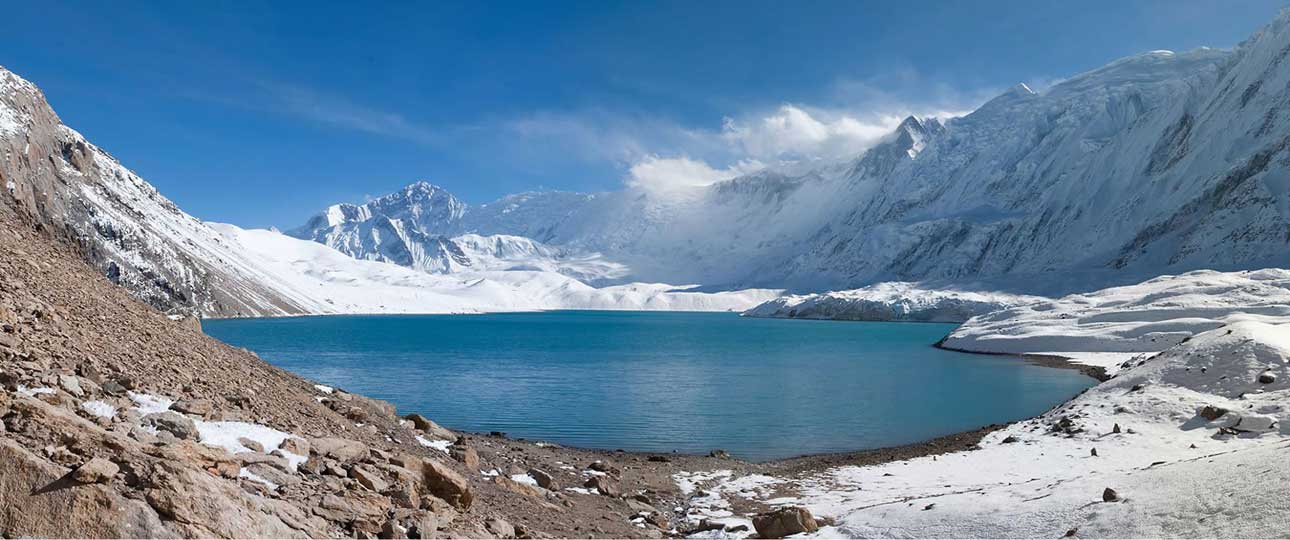 Dudh Kunda Trek – 15 days
Dudh Kunda Trek – 15 days
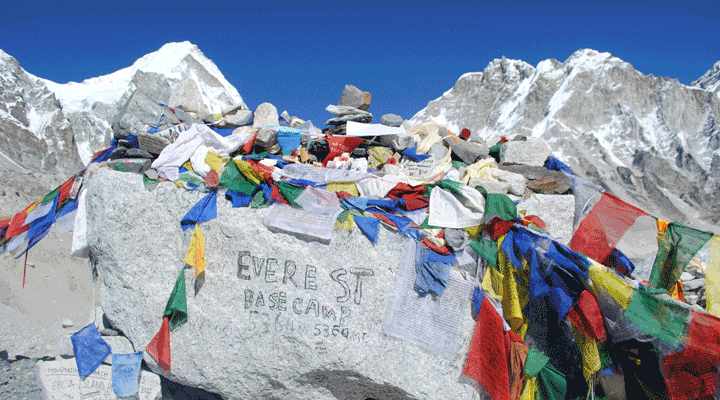 Everest View Trek – 13 days
Everest View Trek – 13 days
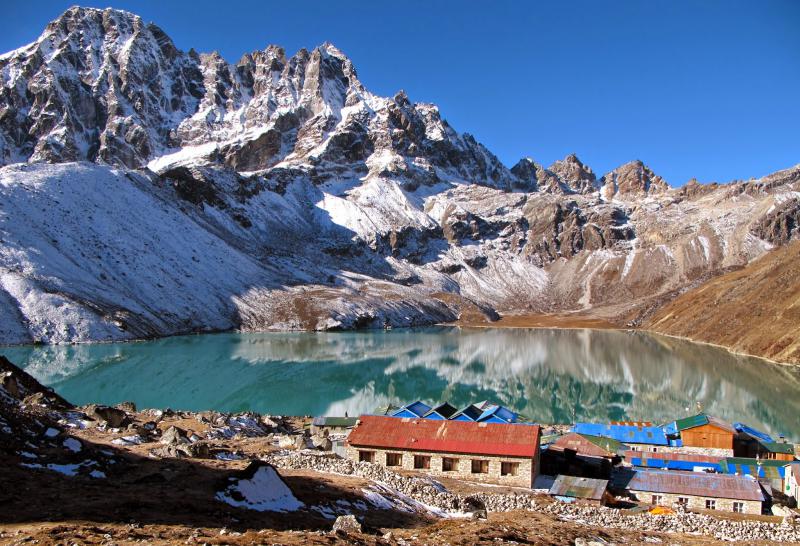 Gokyo Lake Trek – 16 days
Gokyo Lake Trek – 16 days
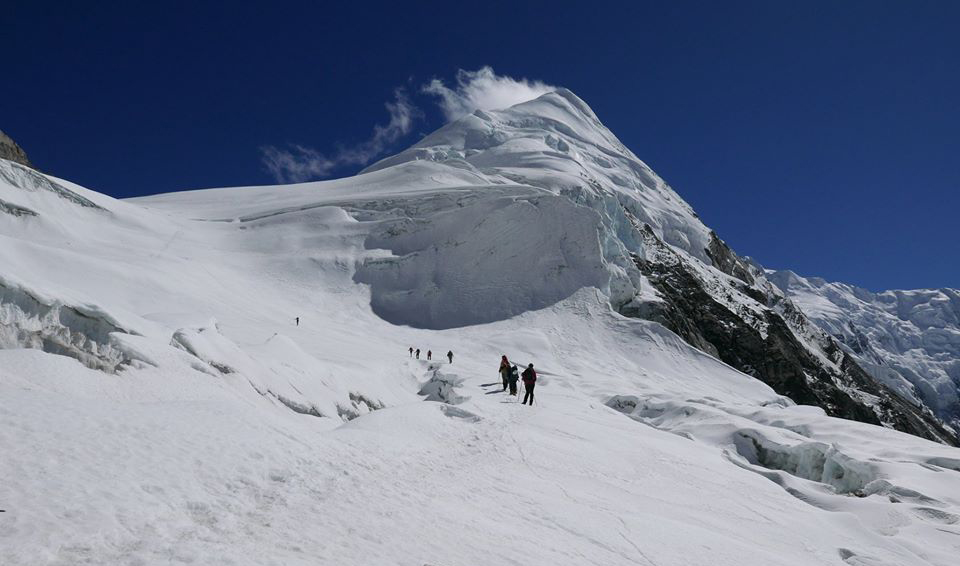 Gaurishankar Himal Trek – 18 days
Gaurishankar Himal Trek – 18 days
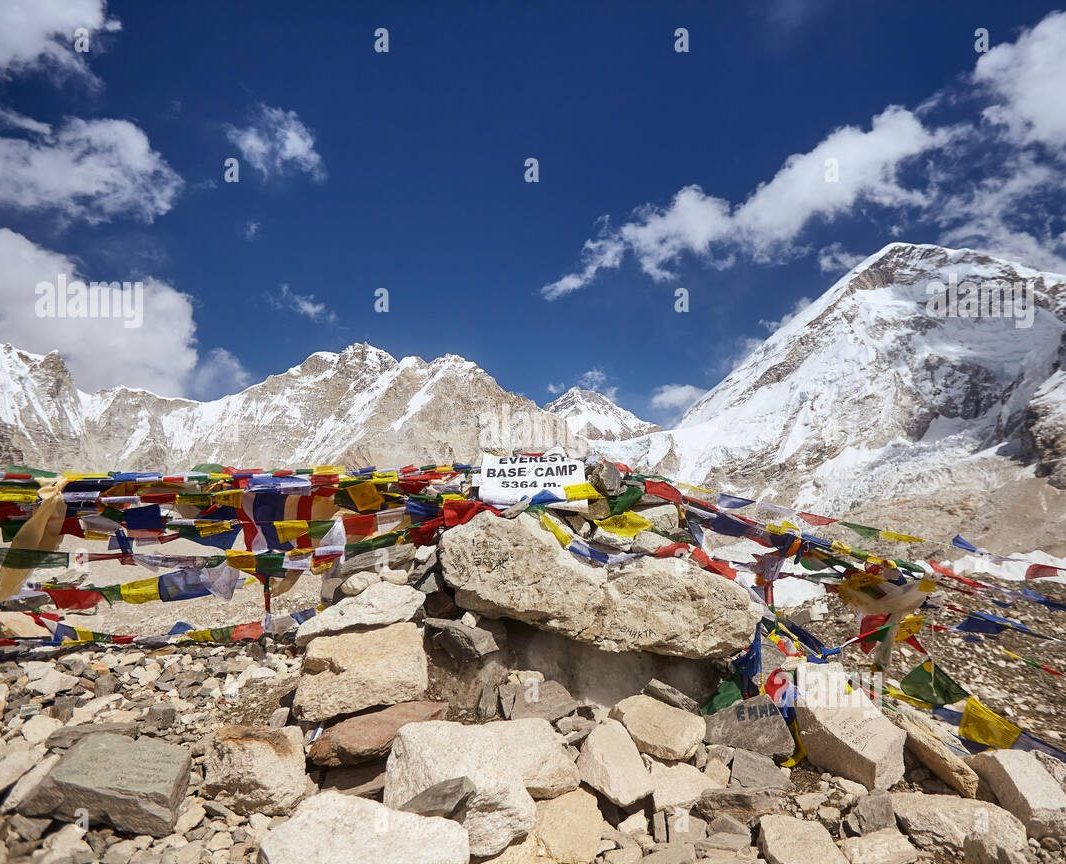 Phaplu to Everest Base Camp Trek – 19 days
Phaplu to Everest Base Camp Trek – 19 days
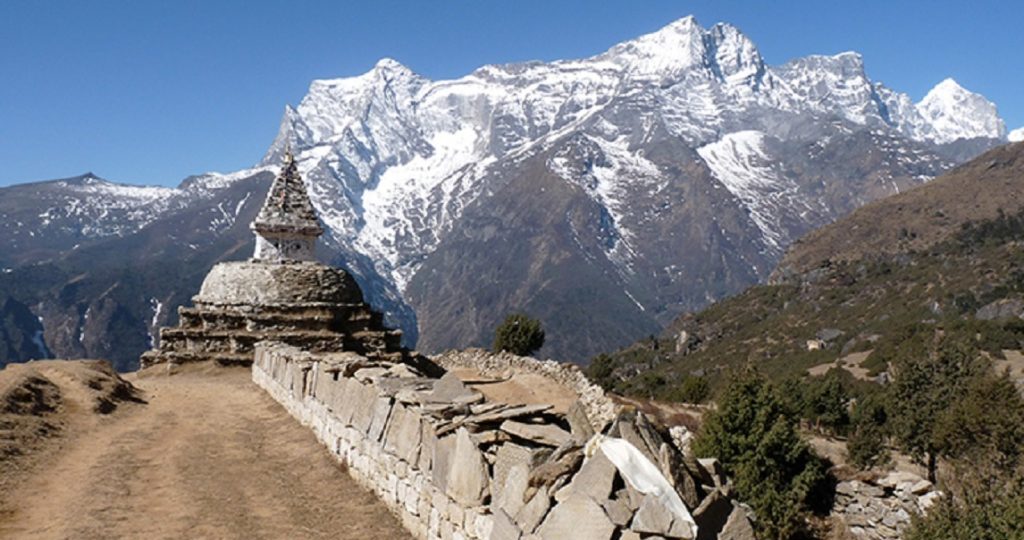 Jiri to Everest Base Camp Trek – 22 days
Jiri to Everest Base Camp Trek – 22 days
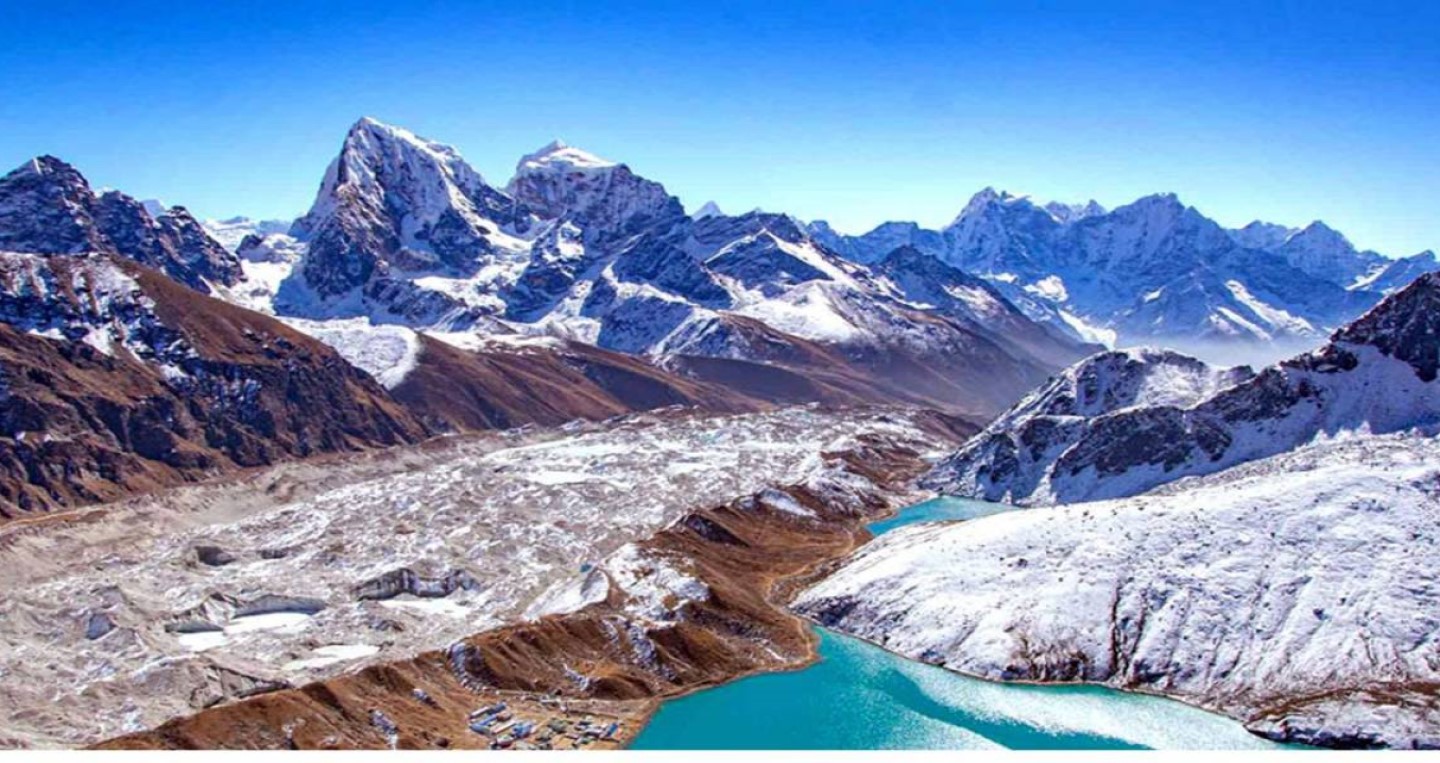 Everest Base Camp and Gokyo Lake Trek – 15 days
Everest Base Camp and Gokyo Lake Trek – 15 days
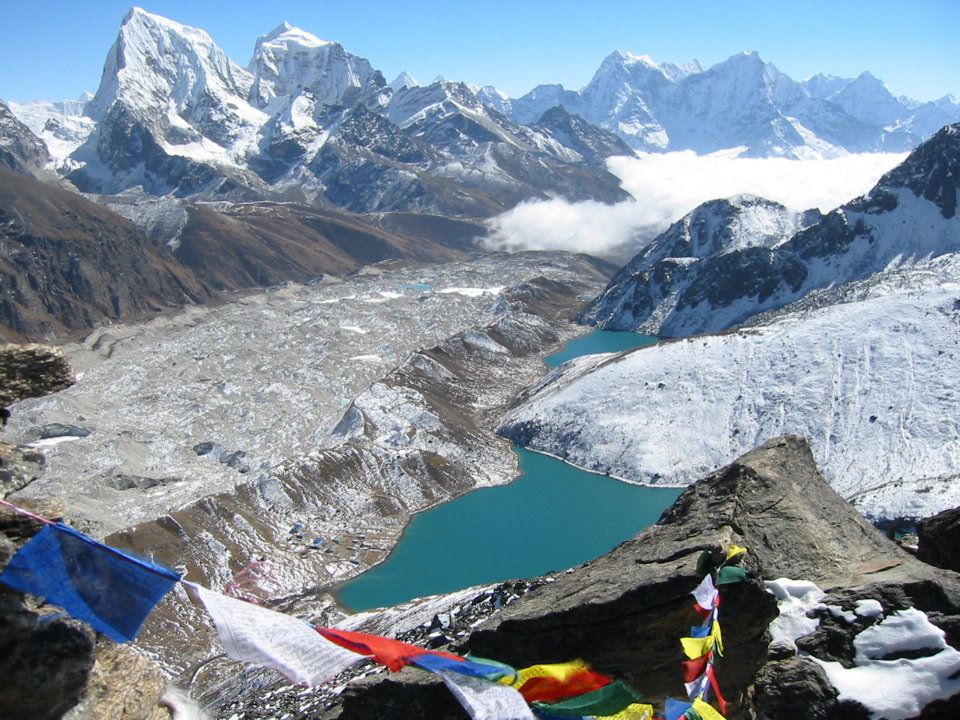 Everest Base Camp Trek – 17 days
Everest Base Camp Trek – 17 days
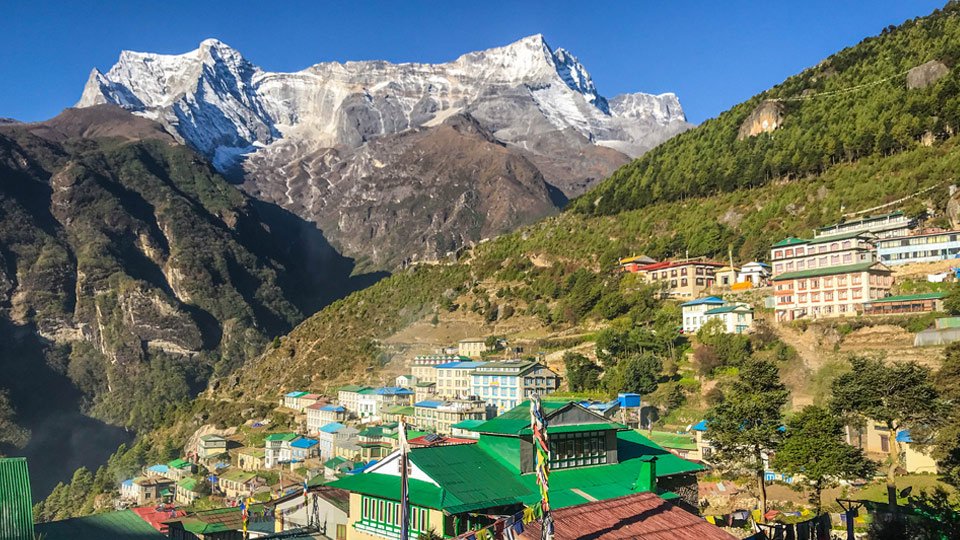 Namche Bazaar Trek – 8 days
Namche Bazaar Trek – 8 days
